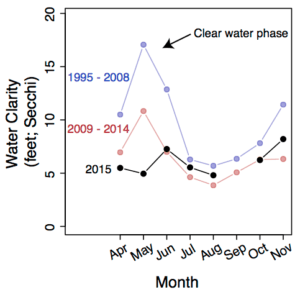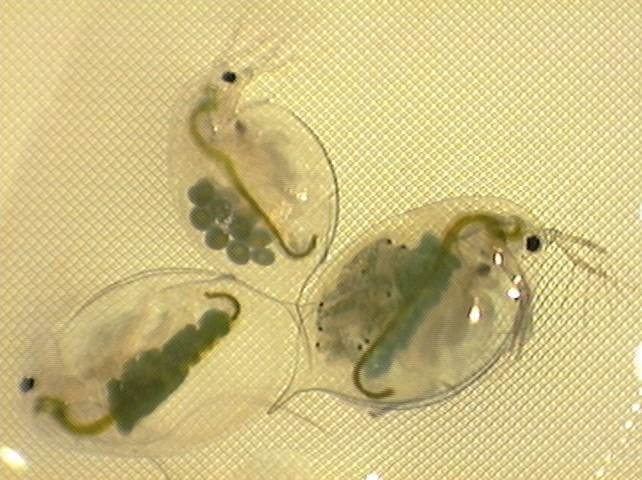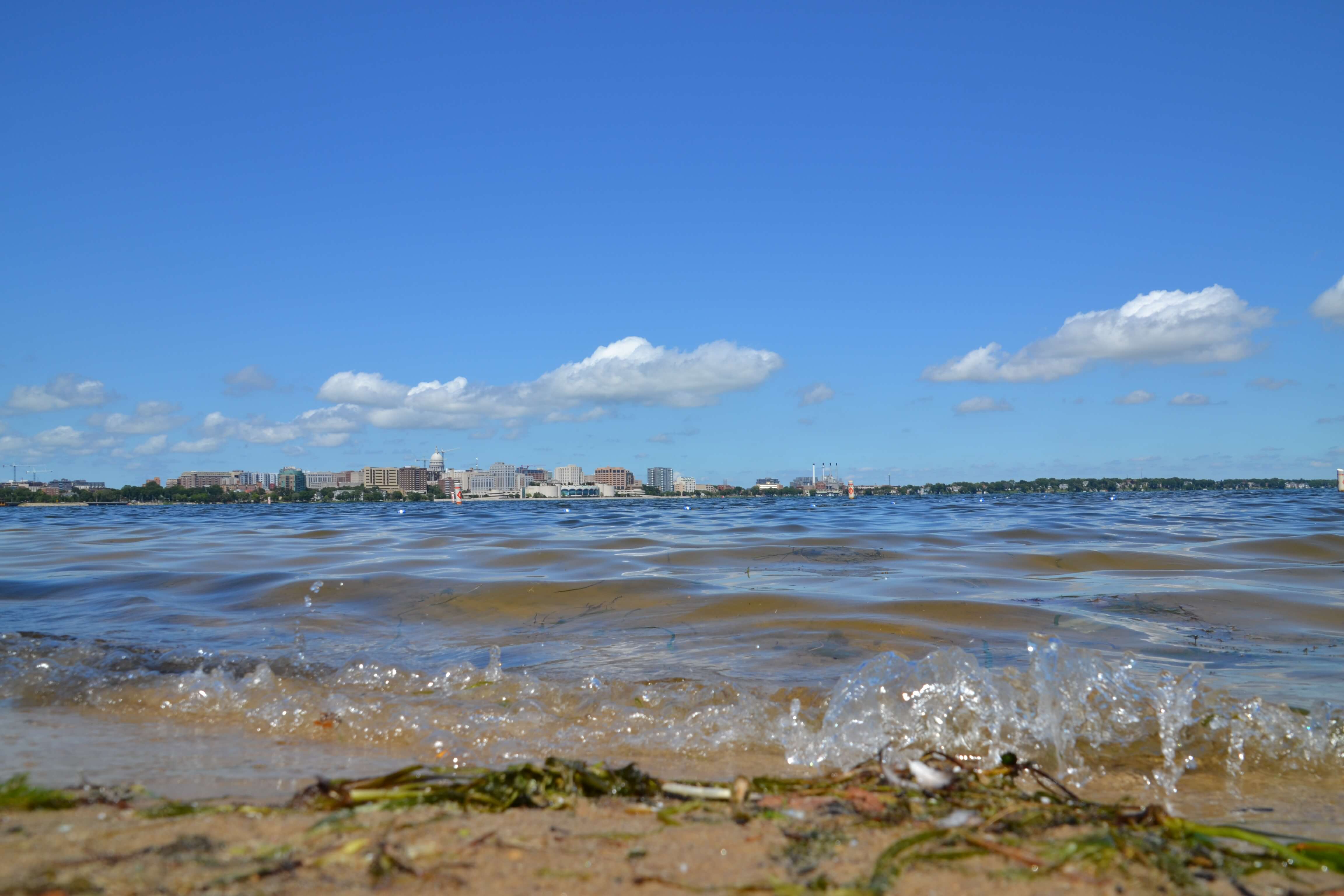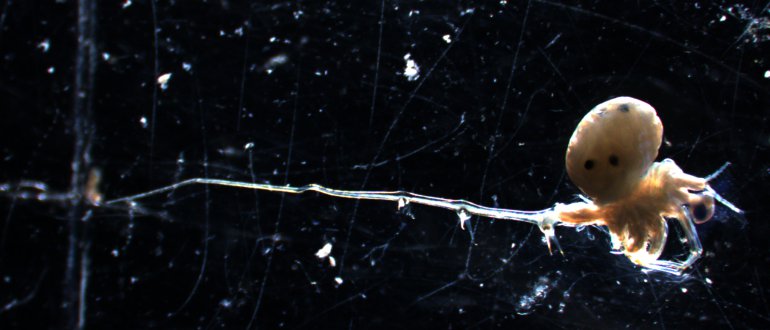This article was first published in the 2015 State of the Lakes Annual Report. For the LATEST update on water quality and our resident invasive species, register for June’s Yahara Lakes 101 talk with the Center for Limnology’s Dr. Jake Vander Zanden: “What do invasive zebra mussels and spiny water flea mean for water quality in the Madison lakes?”
Phosphorus is the number one challenge facing water quality in our lakes – but that’s not the end of the story. Water clarity is in our lakes impacted by complex food web interactions, including invasive species.
Invasive organisms are usually introduced into the Yahara lakes from other lakes in Wisconsin and the Great Lakes. These organisms disrupt the balance of life and can impact water quality in complex ways.
A disruption in Lake Mendota
The invasive spiny water flea was first discovered in Lake Mendota in 2009 and has had a great impact on water clarity. Spiny water flea preys on Daphnia, a native organism that eats a tremendous amount of algae in our lakes. This has a significant economic impact, even when considering the value of water quality alone.
The spiny water flea, which likely came to the Great Lakes from Russia via ballast water, is a predator of Daphnia, a tiny crustacean that is a voracious eater of algae.
A spring without a “clear water phase”
The spiny water flea population exploded in Mendota in the fall of 2014 and ate most of the Daphnia. That means 2015 did not have a spring “clear water phase” because there were no Daphnia to eat the algae that cloud the water. The Daphnia finally returned in late May, but in much fewer numbers. According to the UW-Madison center for Limnology, Lake Mendota has lost almost a month of clear water conditions since the spiny water flea was detected in 2009 (see chart).
Water Clarity Levels for Lake Mendota since 1995

Why is spiny water flea such a problem in Lake Mendota?
Scientists hypothesize that the fish population in Lake Mendota is part of the answer. Lake Mendota is managed for large game fish such as walleye and northern pike, which do not prey on the spiny water flea. In contrast, Lake Monona is managed for pan fish, which help keep the spiny water flea population under control. Spiny water fleas also favor cooler water temperatures found in Mendota compared to the warmer lower lakes.
For the LATEST update on water quality and our resident invasive species, register for June’s Yahara Lakes 101 talk with the Center for Limnology’s Dr. Jake Vander Zanden: “What do invasive zebra mussels and spiny water flea mean for water quality in the Madison lakes?”
Daphnia Pulicaria

This article was first published in the 2015 State of the Lakes Annual Report and is adapted here. Special thanks to Jake Walsh at the UW Madison center for Limnology for his contributions.



